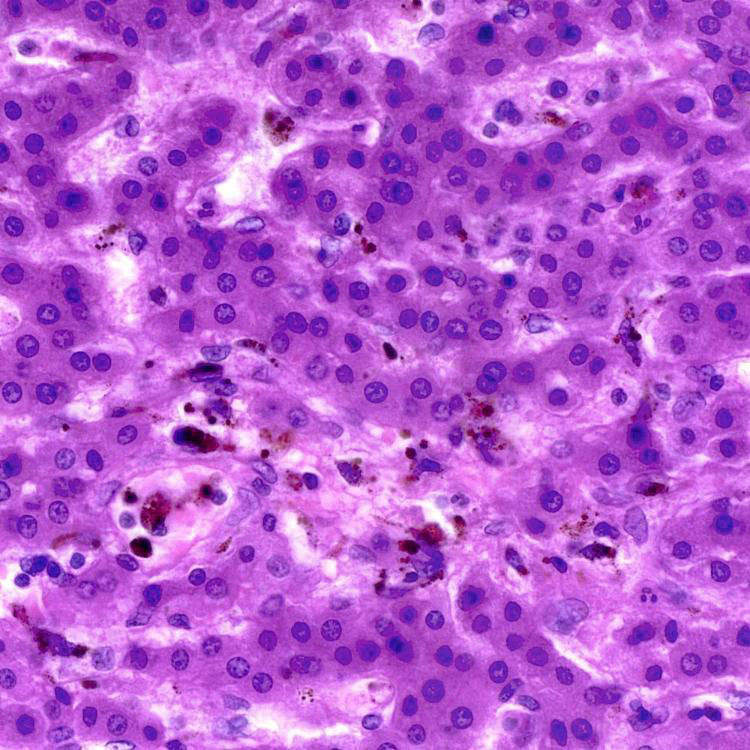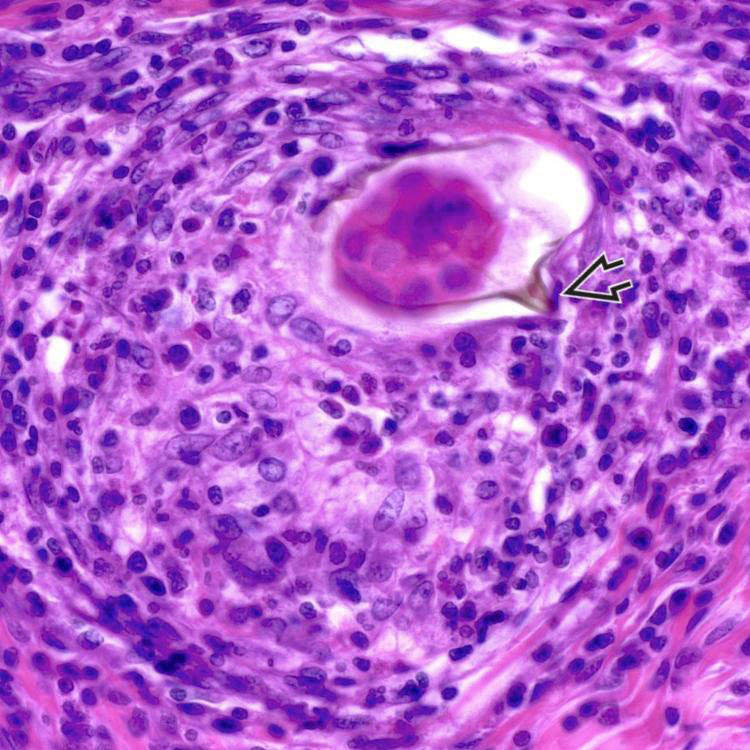S. mansoni and S. japonicum most frequently cause hepatosplenic disease
Diagnostic Checklist

This expanded and markedly fibrotic portal area contains numerous granulomas with central ova
 ; some are clearly embryonated. There is associated chronic inflammation, but eosinophils are not prominent in this case.
; some are clearly embryonated. There is associated chronic inflammation, but eosinophils are not prominent in this case.
Macrophages in the portal tracts and sinusoids contain dark brown pigment, consistent with hematin, which is regurgitated by the flukes after metabolizing hemoglobin.
ETIOLOGY/PATHOGENESIS
Life Cycle and Infection
• Infected humans/animals contaminate fresh water with eggs by urine or feces




• Infection occurs when cercariae (infectious larvae) exit snail and penetrate skin of vertebrate host (in contaminated water)
Stay updated, free articles. Join our Telegram channel

Full access? Get Clinical Tree







 .
.
 , possibly in a small venule; the spines are not visible. In this case, a granulomatous reaction is not present. The lack of inflammation and calcification of the ova implies remote infection.
, possibly in a small venule; the spines are not visible. In this case, a granulomatous reaction is not present. The lack of inflammation and calcification of the ova implies remote infection.
